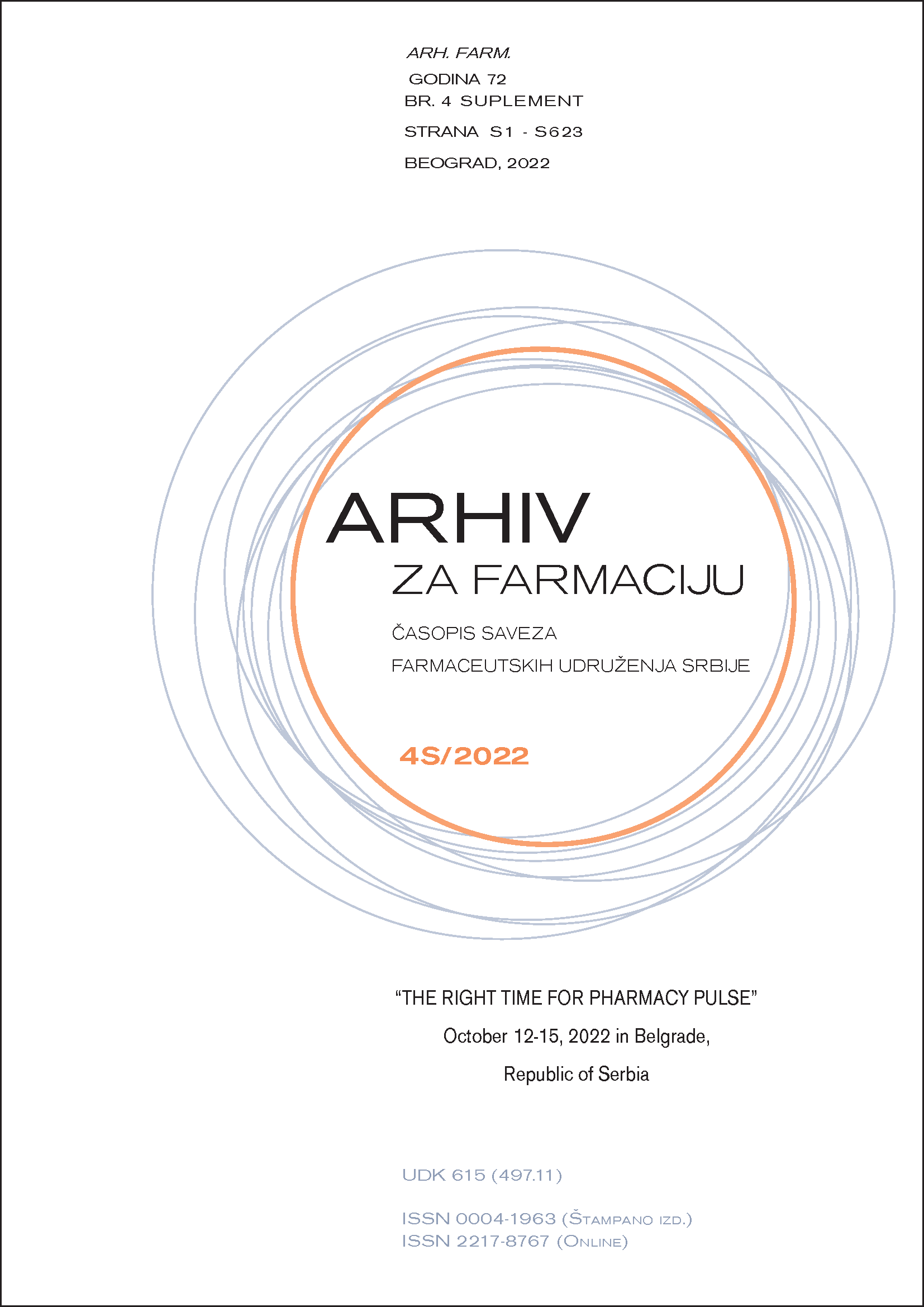An overview of drug interactions in patients with affective bipolar disorder
Sažetak
Drug interactions are classified as quantitative and/or qualitative alterations in the effects of one drug in the presence of another one. Bipolar disorder is an affective disorder characterized by manic and depressive episodes and often requires more than one drug in its treatment. In patients with comorbidities higher prevalence of clinically significant interactions could be expected. The aim was to evaluate clinically significant drug interactions in patients with bipolar disorder and determine whether patients’ characteristics such as age, number of comorbidities and polypharmacy are related with their appearance. A retrospective study included 50 patients treated at the Institute of mental health in Belgrade. Data were obtained from patients’ medical documentation. Epocrates® database was used to identify potential drug interactions. SPSS® software was used for statistical analysis. Patients’ average age was 46.19 ± 11.49. The average number of drugs in therapy was 6.46±2.58 per patient. Total of 549 interactions were detected, approximately 10.98±5.97 per patient. Most interactions (59.2%) demanded monitoring/modification of therapy. Caution was advised in 28.78% of interactions while 11.66% of them suggested use of an alternative treatment. Only 0.36% drug interactions were classified as contraindicated. A positive correlation between the total number of used drugs and number of drug interactions is shown (p<0.001), as well as the patients’ age and number of drug interactions (p<0.05). The results show a high prevalence of interactions in the examined population which implies the importance of monitoring in order to secure patients’ safety and avoid adverse effects.
- Autori zadržavaju autorska prava i pružaju časopisu pravo prvog objavljivanja rada i licenciraju ga "Creative Commons Attribution licencom" koja omogućava drugima da dele rad, uz uslov navođenja autorstva i izvornog objavljivanja u ovom časopisu.
- Autori mogu izraditi zasebne, ugovorne aranžmane za neekskluzivnu distribuciju članka objavljenog u časopisu (npr. postavljanje u institucionalni repozitorijum ili objavljivanje u knjizi), uz navođenje da je članak izvorno objavljen u ovom časopisu.
- Autorima je dozvoljeno i podstiču se da postave objavljeni članak onlajn (npr. u institucionalni repozitorijum ili na svoju internet stranicu) pre ili tokom postupka prijave rukopisa, s obzirom da takav postupak može voditi produktivnoj razmeni ideja i ranijoj i većoj citiranosti objavljenog članka (Vidi Efekti otvorenog pristupa).

